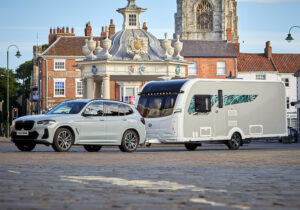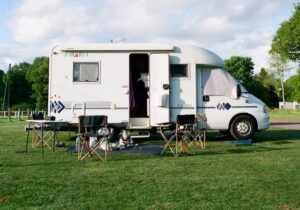Scotland is home to more than 30,000 lochs and Lossiemouth is ideally situated as a base to explore some of them.
Situated in the heart of Moray, this picturesque town is set to be the ultimate summer destination, close to crystal-clear waters, breathtaking scenery and abundant wildlife.
The team at the Park Holidays resort has put together their recommendations for the best lochs in the vicinity of Lossiemouth to visit on your next caravan or motorhome trip.
A spokesperson for Park Holidays said: “As the summer sun casts its golden glow across the serene landscapes of Scotland, Lossiemouth invites travellers and nature enthusiasts to explore its stunning lochs, each offering a unique blend of tranquillity and adventure.”
RSPB Reserve Loch Spynie
Just a 15-minute drive from Lossiemouth Holiday Park is Loch Spynie, whichshould be first on the list for bird watchers.
As well as tufted ducks, wigeons and goldeneyes, other types of wildlife have been known to visit the loch, which boasts diverse habitats and rich biodiversity.
Loch Ness
Loch Ness needs little introduction due to its eponymous monster, but it truly has something for everyone.
The historic Urquhart Castle and the Loch Ness Centre and Exhibition bring added interest to the breathtaking loch, which is steeped in myths and legends.
Loch Oire
Smaller and more peaceful, Loch Oire is a wonderful place to escape the hustle and bustle of life to discover Scotland’s unspoilt beauty.
There’s lots to enjoy at Loch Oire, from exploring the surrounding woodland and spotting wildlife to fishing in its pristine waters.
Millbuies Loch
Millbuies Loch is man-made and was created by damming two small streams. It’s well-stocked with rainbow trout, making it a particularly rewarding spot for fly fishing.
Look out for herons and woodpeckers, which are regular visitors to Millbuies Loch, and spend some time discovering the wider area of Millbuies Country Park.
Lochindorb
Lochindorb is particularly memorable due to the castle that sits at its centre. This medieval fortress dates back to the 13th century and was involved in the Wars of Scottish Independence.
Situated within the Cairngorms National Park and not far from Grantown-on-Spey, Lochindorb makes for a good day trip from Lossiemouth.
Lossiemouth Holiday Park
While the nearby lochs may be a draw at Lossiemouth Holiday Park, you’ll never be far away from water.
Set on the banks of the stunning River Lossie, the park is also just a short stroll from the unspoilt sandy beaches of Scotland’s north east coast.
Photo credit: Unsplash/Tallie Robinson




